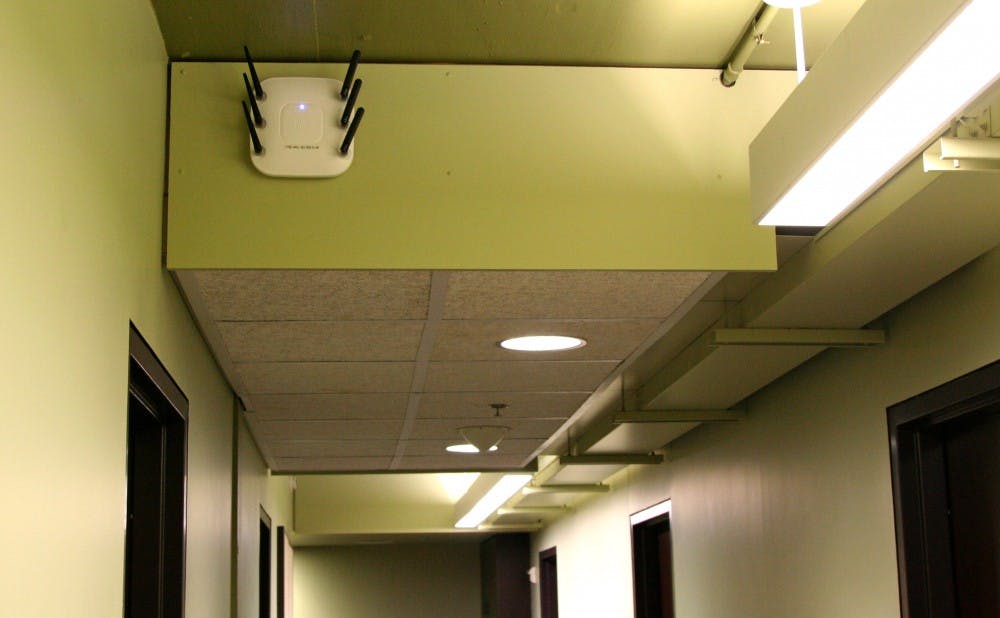Imagine the possibility of your cell phone charging as you sluggishly walk to your 8:30 a.m. class, eat a routine meal at the Loop Pizza Grill or holler like a maniac in Cameron Indoor Stadium—without it ever leaving your pocket.
Researchers at the Pratt School of Engineering may be able to make this possibility into reality.
When senior Allen Hawkes was a freshman, he came up with an idea to harvest energy from cellphone and Wi-Fi signals and put it to use. He and a team at Pratt have now tested a prototype that proves this is possible. The device is composed of metamaterials that are synthetically engineered to manipulate electromagnetic waves, capturing the energy waves from Wi-Fi signals and converting them into an electric current. Currently, the device is too big to be portable, but the long-term plan is to miniaturize it to fit inside cellphones and other handheld devices.
“We built a well-designed metal loop that intercepts electromagnetic power and, using a few electrical components, converts the alternating current into steady direct current which can be used by the electrical device,” said electrical and computer engineering professor Steven Cummer, who contributed to the project.
Alexander Katko, a Ph.D. candidate in Pratt’s electrical and computer engineering department, compared the device to a solar panel—instead of transforming light energy into electricity, the metamaterials transform microwave radiation into electrical energy.
Hawkes first had the idea as a freshman, but it really took off when he focused on it as an independent study during his junior year.
Cummer explained that the amount of electricity generated depends on how far the device is from power generating antennas such as cell phone towers.
“The farther you are, the less power you will receive and the closer you are, the more power you will receive,” he said.
The device has an energy conversion rate of about 37 percent, which is higher than internal combustion engines, for instance. The power output is very low, however, and could only be used for small electronic applications such as charging a small battery or harvesting energy for infrequently used devices that could store energy over time, Katko said.
“The device could charge a cell phone battery, but at a slow rate,” Katko noted. “The electronic device being charged would have to be off or not used in order to charge at a higher rate.”
The project could be used in developing countries to power low-input devices such as remote sensing networks and low-power appliances, Hawkes said. He added that some energy companies have contacted him already about acquiring the technology, but he wants to develop it further.
The commercialization of the device is still a long ways off, Katko added. Future applications, however, will be limited by the amount of energy the technology can harvest.
“Could it be useful? Maybe, but we need to make sure it is connected to the right kinds of applications—in other words, electronic devices that can run off the amount of available power in certain locations,” Cummer said.
The days of self-charging cellphones are still a long way off, but they are now technologically possible.
Get The Chronicle straight to your inbox
Signup for our weekly newsletter. Cancel at any time.

